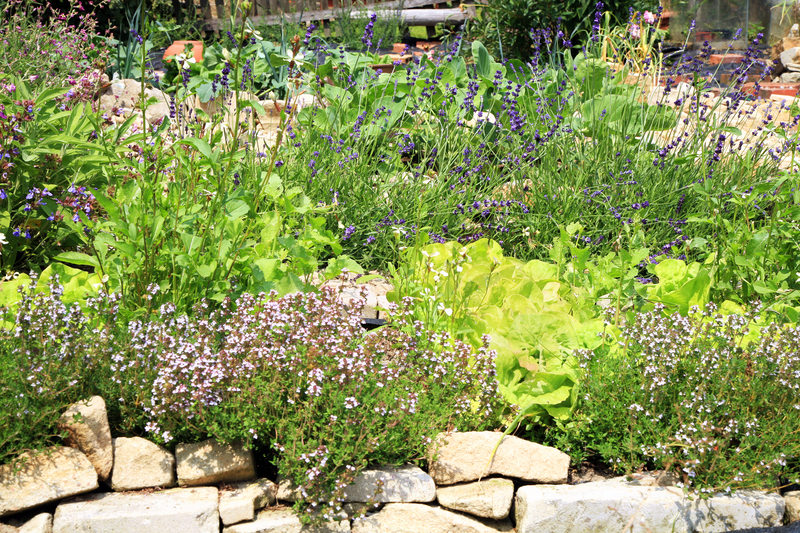Begin Transforming Your Overgrown Garden Oasis
Is your garden thriving a bit too wild for comfort? Do you walk through tangled weeds, overgrown shrubs, and feel overwhelmed by the sheer task of reclaiming your outdoor sanctuary? Transforming your overgrown garden oasis may seem like a monumental undertaking, but with thoughtful planning, the right approach, and a pinch of creativity, it can become a deeply rewarding journey. Read on for a comprehensive step-by-step guide to revitalizing your neglected garden into a flourishing haven.

Why Do Gardens Become Overgrown?
Before you tackle the challenge, it's important to understand why your garden oasis became overgrown in the first place. Gardens often run wild for reasons such as:
- Lack of regular maintenance due to busy schedules or unforeseen circumstances.
- Inadequate planning leading to plants outgrowing their designated spaces.
- Invasive species quickly taking over open areas.
- Seasonal neglect, especially during winter or periods of illness.
- Inherited problems from previous homeowners or neglected properties.
No matter the reason, it's never too late to start transforming your garden into the lush oasis it was meant to be.
Planning Your Garden Transformation
1. Assess Your Overgrown Oasis
Begin your garden makeover journey by spending some time in your space. Take notes, snap photos, and observe:
- What plants are thriving, struggling, or have overtaken others?
- Where is there too much shade or sun?
- Are there hidden gems--old garden features, paths, or structures--worth rescuing?
- What is the extent of invasive weeds and stubborn brambles?
- Which areas are most urgent for cleanup?
This initial inspection will help you prioritize tasks and set achievable goals.
2. Envision Your Ideal Garden
Before you dig in, imagine your transformed garden oasis:
- What style inspires you--cottage, modern, or naturalistic?
- Would you like distinct entertaining zones, wildlife areas, or vegetable patches?
- Do you prefer low-maintenance features or hands-on gardening?
- Are there colorful blooms, textured foliage, or fragrant herbs you'd love to incorporate?
Draw a rough plan or collect inspirational images. This vision will keep you motivated during messier stages of transformation.
Gathering Tools and Resources
Successfully transforming an overgrown garden requires the right tools. Make sure you have:
- Sturdy gloves to protect your hands from thorns and debris.
- Spades and shovels for digging up roots and large weeds.
- Secateurs or loppers to trim shrubs and prune branches.
- Wheelbarrow for hauling green waste.
- Rake and hoe to gather leaves and break up compacted soil.
- Compost bin or bags for organic waste disposal.
- String trimmer or lawnmower for taming lawns and edges.
- Mulch, compost, and fertilizers to restore soil health.
- Protective eyewear and long sleeves for extra safety.
You may also want to call in professional help, especially for the heaviest lifting or tree removal.
Step-By-Step Guide to Transform Your Overgrown Garden Oasis
Step 1: Clear Out the Clutter
Start by removing any obvious debris and garden junk. This includes broken pots, weathered furniture, old timber, and non-compostable materials. A clean canvas makes it easier to plan your next moves.
Step 2: Tackle Weeds and Overgrowth
This stage takes elbow grease and patience. Here's how to approach it:
- Identify invasive weeds and prioritize removal. Dig them up at the roots to prevent regrowth.
- Cut back overgrown shrubs and brambles to a manageable height. Use loppers for thick stems.
- Divide perennials that have spread too far, preserving healthy segments for replanting.
- Reclaim garden beds by gently digging out unwanted plants and grass.
Tip: Work in sections to avoid feeling overwhelmed. Even half an hour a day makes steady progress!
Step 3: Prune Trees and Restore Structure
Over time, trees can become dense, block sun, or even threaten structures. Prune out dead or diseased branches, thin the canopy, and control growth to allow more light into your oasis. If any large trees seem dangerous, consult a certified arborist.
Step 4: Revitalize the Soil
With beds cleared and plants pruned, it's time to feed the earth. Overgrown gardens often have depleted or compacted soil. Transform it by:
- Removing remaining weeds and grass clumps.
- Turning the soil with a fork or tiller to aerate and break up compaction.
- Incorporating organic matter: compost, well-rotted manure, or leaf mold.
- Testing the soil pH if you plan to introduce particularly sensitive plants.
Healthy soil is the foundation of a thriving garden transformation.
Step 5: Redefine Edges and Pathways
Sharp edges and inviting pathways instantly transform an unruly garden. Use a spade or half-moon edger to redefine borders. Lay down gravel, bark, or stepping stones for practical and aesthetic pathways. If old paths are salvageable, clear and refresh them.
Step 6: Design and Replant
Now the fun begins! With your garden's bones in place, start:
- Relocating or dividing overgrown perennials to new spots.
- Introducing new plants that suit your climate, soil, and lifestyle.
- Grouping plants in drifts or clusters for bold visual interest.
- Layering heights--ground covers, mid-level shrubs, and statement trees.
- Adding herbs, vegetables, or wildlife-friendly native species.
- Mulching beds to lock in moisture and suppress future weed growth.
For the best transformation, select a mix of evergreen structure and seasonal color.
Step 7: Add Special Features
Personalize your garden sanctuary with:
- Benches or seating nooks, ideal for relaxation.
- Water features like birdbaths, small ponds, or fountains.
- Raised beds or vertical planters for small spaces.
- Garden art, trellises, or decorative containers.
- Outdoor lighting for magical evenings in your oasis.
These elements enhance both the utility and pleasure of your transformed outdoor space.
Maintaining Your Newly Transformed Garden Oasis
Consistency is key to keeping your garden oasis from slipping back into chaos. Establish a simple maintenance routine:
- Monthly pruning to keep plants in check.
- Regular weeding--short sessions prevent big problems.
- Refreshing mulch annually to suppress weeds and nourish soil.
- Seasonal feeding for shrubs, perennials, and lawns.
- Inspecting for pests and disease before they spread.
A little weekly care protects your hard work and lets your garden retreat flourish year-round.
Eco-Friendly Strategies for a Sustainable Garden Transformation
A beautiful oasis is also a responsibility to the planet. Embrace sustainable practices when you begin transforming your overgrown paradise:
- Compost green waste to feed your garden organically.
- Plant pollinator-friendly flowers such as lavender, echinacea, and wildflowers.
- Install a rain barrel to harvest water for irrigation.
- Mulch beds with organic materials to reduce evaporation.
- Choose native plants that thrive with less care and support local wildlife.
- Minimize chemical fertilizers and pesticides for a healthier ecosystem.
Common Challenges and Solutions in Garden Restoration
Problematic Weeds
Some weeds, such as bindweed or horsetail, are persistent. For tough cases:
- Consistently remove regrowth before flowering or seeding.
- Smother problem areas with cardboard and mulch.
- Consult local gardening centers for safe, effective treatments.
Poor Soil Quality
If your soil is heavy clay or very sandy, enrich it with organic amendments. Raised beds are a great solution where improvement is slow.
Dealing with Limited Time
It's okay to tackle your garden transformation in stages. Focus on one bed, one feature, or even one weekend at a time. The journey is as valuable as the destination.
Helpful Tips for a Successful Garden Overhaul
- Invite friends or family for a "garden blitz" weekend--many hands make light work!
- Use tarps to move large quantities of weeds or prunings.
- Reward yourself with breaks to enjoy each milestone achieved.
- Photograph your progress for lasting motivation and inspiration.
- Join local garden clubs or online forums for advice and community support.

Frequently Asked Questions about Garden Transformations
How long does it take to restore an overgrown garden?
The timeline can vary from a few weekends for small plots to several months for larger, intricate gardens. Breaking the project into phases prevents overwhelm.
What should I do with all the green waste?
Compost as much as possible on-site, or use municipal green waste collections. Avoid composting seeding weeds or diseased material.
Are there plants I should avoid reintroducing?
Yes. Steer clear of known invasive species, high-maintenance varieties you find overwhelming, and any plants unsuited to your soil or climate.
Your Garden Transformation Awaits
Turning an overgrown garden into a peaceful, vibrant oasis is a transformative experience in itself. Don't let initial chaos discourage you--each weed cleared and each plant nurtured brings you closer to a garden retreat you'll cherish. Whether your motivation is relaxation, beauty, or sustainability, starting your garden transformation journey today opens the door to seasons of joy, creativity, and growth.
Ready to begin transforming your overgrown garden oasis? The very first step is simply stepping outside. Take a deep breath, roll up your sleeves, and let the renovation adventure begin!


